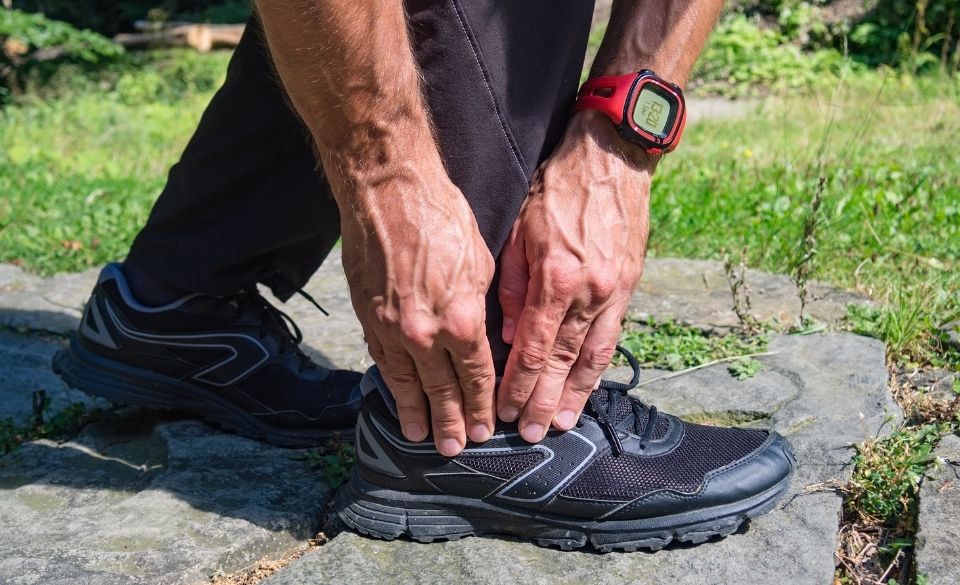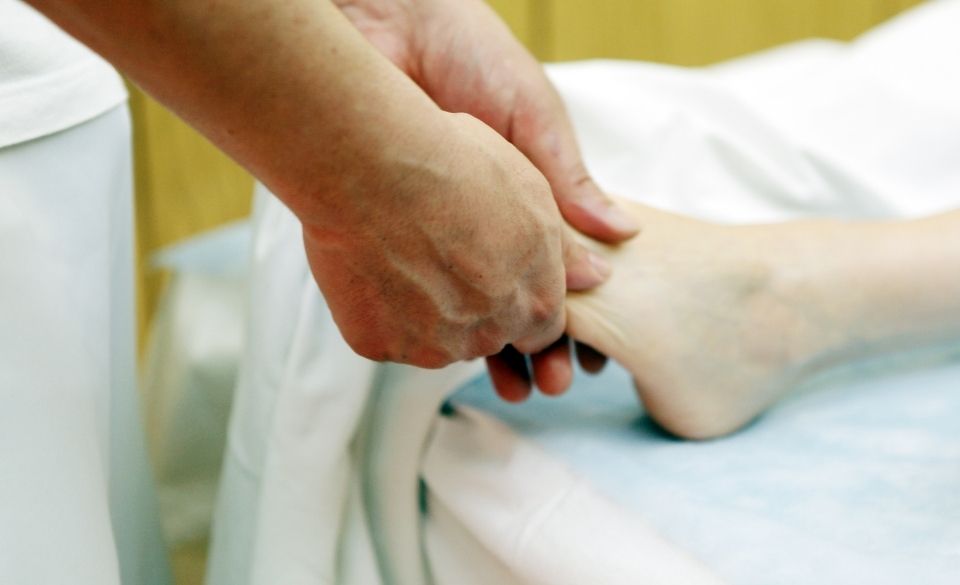
Metatarsal Pain Treatment Guide: How to Treat Metatarsalgia
Page Contents
Metatarsalgia is a condition characterized by pain in the ball of the foot and surrounding toe area. It occurs when the foot’s weight-bearing area (ball of the foot) becomes swollen, red, and sore.
Metatarsalgia arises from inflammation in one or more joints between bones in the metatarsal heads and metatarsal bases.
The front part of a person’s foot supports most weight and places much pressure on its metatarsals. These are bones located just below where your toes are attached.
Metatarsal pain is associated with rheumatoid arthritis, gout, plantar fasciitis, bursitis and carpal tunnel syndrome, . All these injuries are usually caused by inflammation and fluid accumulation around the joints. That means symptoms are often caused by the build-up of fluid under the toes. It can also be caused by certain forms of arthritis, a strain on a ligament, or overuse. Walking barefoot, using the wrong running shoes, or even hopping on one leg can all cause similar symptoms as well.
There are many causes of metatarsal pain that you should be aware of, which includes:
– Joint injuries
– Sprains
– Ligament injuries
– Overuse injuries
– Arthritis and other conditions
How Does Metatarsalgia Feel?
Metatarsalgia feels like you are walking on rocks. It is a sharp pain in the ball of your foot, which makes it difficult to walk or stand for long periods. This can lead to pain and suffering for runners, or people that are constantly on their feet. Metatarsalgia is usually caused by repetitive stress on joints. So wearing shoes with good support is a way to relieve and prevent symptoms of Metatarsalgia.
Metatarsalgia manifests as pain in the ball of your foot, tenderness, and redness on the top of your foot. These symptoms typically come from wearing too-tight shoes or shoes that have poor support for your feet. For some people, Metatarsalgia can also be caused by plantar fasciitis (a form of inflammation in the bottom part of each foot). Some people experience it as a burning sensation, while others feel a sharp tingly pain across the front of the foot.
Symptoms may reduce if you avoid putting pressure on your toes for a period of time. Metatarsalgia often develops after an injury to the foot, such as a sprain, strain, or fracture. You may also experience symptoms if the metatarsals are bent, rotated, or broken during exercise. Other times it can be caused by general overuse and limited recovery frim running. On occasion, it can be caused by plantar fasciitis. This condition typically develops suddenly and may affect your ability to function normally in daily life.

What Causes Metatarsalgia in Runners?
Metatarsalgia can be caused by variables, including overpronation (in which the foot rolls inward more than usual), under pronation (in which the foot rolls outward too much), and flat feet (which often leads to over-pronation).
Though it can happen to anyone, it’s mostly common among runners who wear shoes without proper support.
Runners should understand the possible causes and prevention methods of Metatarsalgia so that they’re able to avoid or minimize their risk.
See below for potential causes of Metatarsalgia:
– Due to a muscle or tendon pulling on the soft tissue.
– Running shoes with insufficient cushioning can cause symptoms of Metatarsalgia.
– Wearing running shoes that are too old or worn-out causes Metatarsalgia
– Poor ankle mobility can lead to heel pain or even a bone spur/growth.
– Increasing training load too fast that the muscles and tendons can’t adapt.
– Excessive inward rolling of the feet while running.
– Metatarsalgia pain can also be caused by having high arches or flat feet.
– Your job, along with your occupation and activities, might be reason enough to have pain in your feet or hand, but prolonged standing and sitting also contribute to the issue.
– If there are any fractures or other types of sprain & injuries, it can also cause Metatarsalgia.
There are many ways to prevent Metatarsalgia in runners. One such method is by using insoles with arch support. Another way to avoid it is by using a more stable shoe or stability inserts in your running shoes.

How To Treat Metatarsalgia
The most common treatment for Metatarsalgia is to rest the foot and apply gentle massage to the area to ease any soreness or pain. Some other therapies or remedies have been known to help relieve pain and speed up recovery. Some of these include:
RICE Method
To treat Metatarsalgia, you will want to follow the RICE method. This method involves resting, icing, compression, and elevation.
Rest: Restrict the activity that hurts your foot. Put your foot up on a pillow or place a bag of frozen vegetables wrapped in a towel on the painful area. If you’re unable to put weight on your foot and ankle, try resting it in a bucket of cold icy water.
Ice: Place an ice pack on your painful area for 15 minutes every hour. You can also submerge the affected foot in iced water for 10 minutes at a time.
Compression: Apply a compression bandage to the painful area after icing. Compression should be done evenly with 2-3 pounds of pressure (.7-1 kg) per inch (2mm) of bandage width on 3 out of 4 areas of your foot: heel, ball, and plantar fascia or arch of the foot (doesn’t matter which is your favorite).
Elevate: If you’ve got a sprained ankle or sprained wrist and can’t bend your knees, use pillows to help elevate the foot in bed when you sleep. Alternatively, lie on the floor with your feet up against to wall. Both positions will help limit swelling and speed up recovery.
There are following more methods you can try to ease the pain and get back on your feet quickly:
Use A Pad
A gel pad under the forefoot can help reduce pain, as well as a bandage or wrap. Metatarsal pads are small gel pads that can be placed under the ball of the foot to help reduce impact, speed up healing and reduce pain. They’re most commonly used in the early treatment phase.
Wear Appropriate Shoes
Many people have pain in their feet due to inflammation around these areas because they are overworking them when they walk or jog in shoes that don’t fit properly. Your running shoes need to be soft and fit well at the ball of the foot. This will help reduce impact to that area and prevent any compression around the forefoot.
Consult Your Doctor To Treat Metatarsalgia
With Metatarsalgia you will notice pain or discomfort when you stand on your feet for long periods at a time. This can lead to more serious injuries if left untreated.
Metatarsalgia affects people all over the world. Pain can range from mild to severe depending on what other factors are involved. Traditionally, treatment for Metatarsalgia entails a visit to your doctor where they will examine your feet and possibly take an MRI scan. This is to look for any underlying medical issues or damage to the forefoot.

Does Running Make Metatarsalgia Worse?
Yes, running can cause Metatarsalgia to worsen if you suffer from it and run too much with no breaks or recovery time. Running places a lot of stress on your feet and can lead to severe injuries if not appropriately addressed. Your foot absorbs the majority of the impact with each stride you take. Therefore, you should avoid training, running, or anything else that will cause pressure on your forefoot if you have symptoms. Otherwise, you’ll only delay the recovery process and still end up with injuries to worry about down the road.



